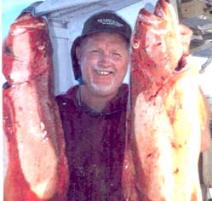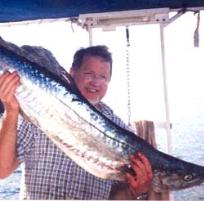Science reveals life history of reef fish
Published on 29 June, 2005
Associate Professor Graham Pegg, Head of CQU Chemical & Biomedical Sciences, has just spent three days at the Australian Nuclear Science and Technology (ANSTO) facility, using secondary ion mass spectrometry (SIMS) in an attempt to unravel the life history of large reef fish such as sweetlip and red emperor.
 "The SIMS technique allowed us to analyse the chemical make-up of thin sections of fish ear bones (otoliths), which are like the 'black box recorder' of the life history of the fish," he said.
"The SIMS technique allowed us to analyse the chemical make-up of thin sections of fish ear bones (otoliths), which are like the 'black box recorder' of the life history of the fish," he said.
"The otolith is formed at fertilisation and grows by daily increments. Scientists have long used otolith sections to age fish since there are usually clear annual growth increments evident, much like how trees can be aged.
"Over the past few years, fisheries scientists have realised that the growing otolith bone also incorporates trace elements from the sea water environment in which the fish is living. We are interested in finding out whether different reef environments give different otolith chemical signatures.".
The trip to ANSTO to use the $2 million dollar SIMS analyser was made possible through an AINSE (Australian Nuclear Science and Engineering) grant to Dr Pegg, to further his work on studying migration behaviour of reef fish larvae, juveniles and adult fish.
 "This work may help us to determine whether the new reef zoning plans for the Great Barrier Reef will work over the longer term," he said.
"This work may help us to determine whether the new reef zoning plans for the Great Barrier Reef will work over the longer term," he said.
Associate Professor Pegg and his CQU research collaborators (Drs Aspden and Sinclair) will be giving an evening public lecture about their research on August 4 at CQU Rockhampton Campus.
Recreational and commercial fishers and members of the public interested in fisheries science are welcome to attend.
For details call Kay Wolfs via 4930 6568 or k.wolfs@cqu.edu.au .

